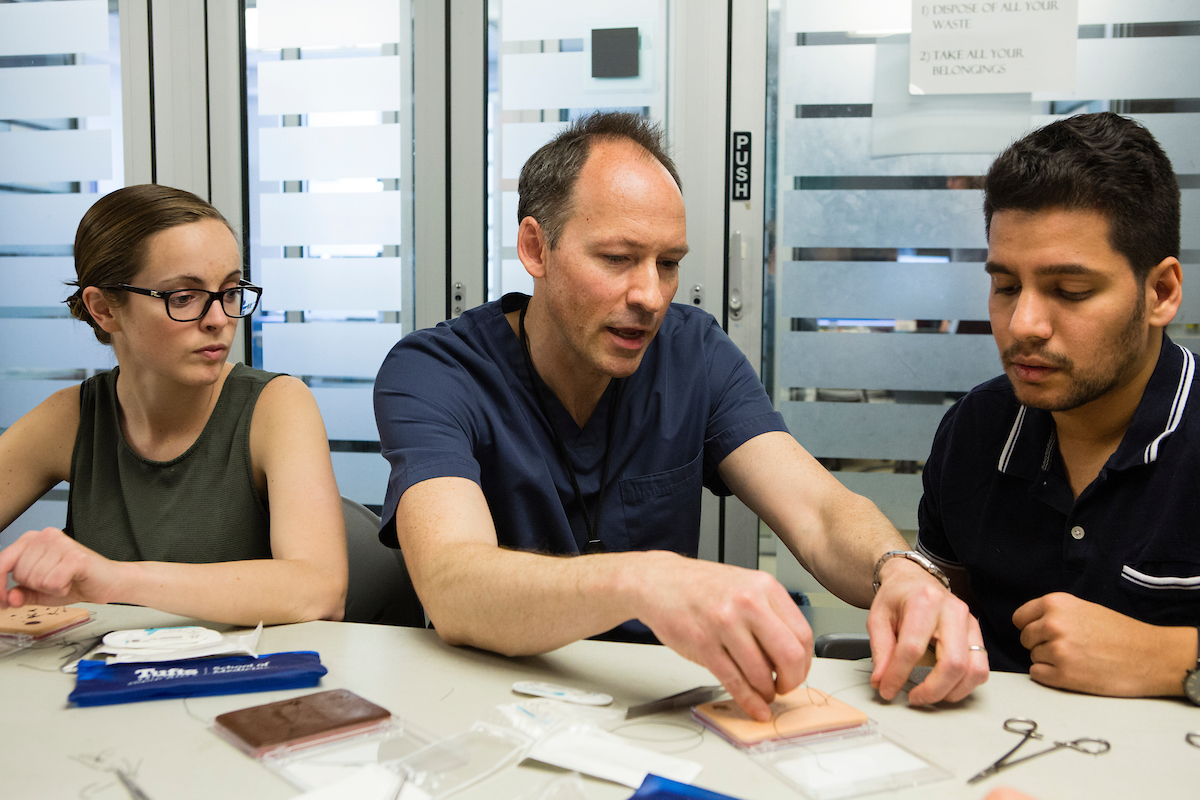
Learning takes place within a broader socio-political and increasingly international context, where diversity among the students and teacher exists along multiple lines, including: race, gender, and physical attributes, ethnicity, political opinion, sexual orientation, religion, culture, class background, and family history, learning preferences, and proficiencies. Teaching a diverse class where all students are able to learn and interact openly requires a thoughtful approach.
Getting Started
Shape the Environment
This begins on the very first day of class, and can set the tone for the whole semester:
- Provide opportunities for interaction among all students and faculty
- Have an ongoing practice to address your own possible prejudices and consider how they inform how you teach and interact with your students
- Ask students to complete an initial survey asking more about who they are and what their concerns might be
Respect
There are some very simple ways to show respect for different backgrounds and perspectives:
- Learn how to pronounce everyone’s name in the class
- Be mindful of holidays that students might observe and refrain from scheduling exam
- Avoid idiomatic English as it may be confusing for students raised in other regions
- Include a statement in your course syllabus offering guidelines for respectful disagreement
Safe environment
- Create openings in discussion for more hesitant people to participate, and use discussion pairs on occasion
- If a disruptive disagreement occurs, ask students to write a reflection response concerning the incident; follow up privately with the student after class
- Encourage students to contact you (email, phone call, before or after class) if they are concerned about something adversely affecting interactions with you or other students
Avoid making assumptions
- Do not assume anything about a student based upon a group to which he or she belongs or appears to belong – we all have multiple identities, and ther are many invisible forms these take
- Avoid creating expectations for both high and low performance based on stereotypes
- Be sure that humor within the classroom does not denigrate anyone
- When discussing social and cultural issues, frame class discussions in a manner that does not assume individual people or social groups are the “problem” to be fixed
Model Diversity
- Model the importance of diversity of perspective by using examples from various class backgrounds and thought approaches
- Critically examine textbooks and other educational materials to ensure language and images are inclusive and reflective of all students
- Use examples that are diverse; our own experience is not shared by all
- Be careful when including historical or cultural examples that may be unfamiliar to students from other countries – they may require additional explanation or if there is another example that is inclusive, it may be more effective
- Connect learning material to local community and larger global issues
Class Participation
- Be aware of how cultural background or prior experience influences class participation
- Make eye contact with all students and allow more waiting time for responses to include those students who are less assertive and/or more reflective
- Ask students to write down their thoughts befor you open up a discussion
- Attempt to make content relevant to the lives, experiences, and perspectives of your students
Additional Resources
- Teaching in Racially Diverse College Classrooms – Harvard University. Derek Bok Center for Teaching and Learning, Harvard University
- Felder, R., & Soloman, B.A. Index of Learning Questionnaire
- Universal Course Design by Equity and Excellence in Higher Education, Institute on Disability at University of New Hampshire with Institute for Community Inclusion at University of Massachusetts Boston
